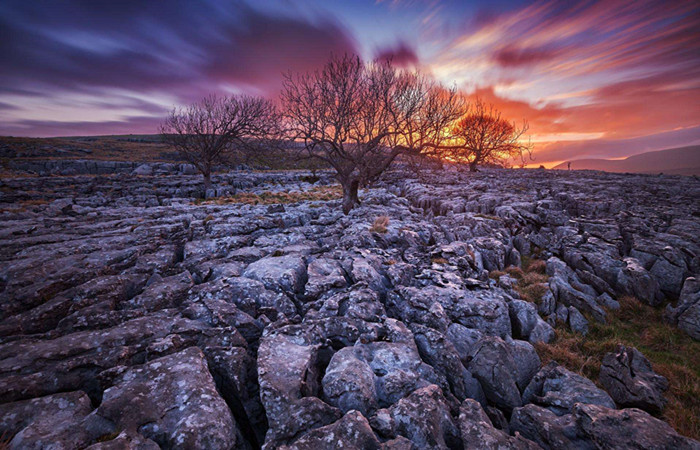
ggplot2的主题模板总结
ggplot2的主题模板
徐静
2017年11月20日
1.使用ggplot2包中内置主题
主要有如下几种
theme_gray() # 默认
theme_bw()
theme_linedraw()
theme_light()
theme_dark()
theme_minimal()
theme_classic()
theme_void()
使用如下
library(ggplot2)
library(gridExtra)
p <- ggplot(mtcars) + geom_point(aes(x = wt, y = mpg))
grid.arrange(p + theme_gray() + ggtitle("theme_gray"),
p + theme_bw() + ggtitle("theme_bw"),
p + theme_linedraw() + ggtitle("theme_linedraw"),
p + theme_light() + ggtitle("theme_light"),
p + theme_dark() + ggtitle("theme_dark"),
p + theme_minimal() + ggtitle("theme_minimal"),
p + theme_classic() + ggtitle("theme_classic"),
p + theme_void() + ggtitle("theme_void"),ncol=2)2.使用拓展包中的主题
主要有4个包(主要介绍前两个)
- ggthemes包
- ggthemr包
- ggtech包
- ggsci包
ggthemes: 这个包内置了许多类似ggplot2中theme的主题,具体如下
theme_base: a theme resembling the default base graphics in R. See also theme_par.
theme_calc: a theme based on LibreOffice Calc.
theme_economist: a theme based on the plots in the The Economist magazine.
theme_excel: a theme replicating the classic ugly gray charts in Excel
theme_few: theme from Stephen Few’s “Practical Rules for Using Color in Charts”.
theme_fivethirtyeight: a theme based on the plots at fivethirtyeight.com.
theme_gdocs: a theme based on Google Docs.
theme_hc: a theme based on Highcharts JS.
theme_par: a theme that uses the current values of the base graphics parameters in par.
theme_pander: a theme to use with the pander package.
theme_solarized: a theme using the solarized color palette.
theme_stata: themes based on Stata graph schemes.
theme_tufte: a minimal ink theme based on Tufte’s The Visual Display of Quantitative Information.
theme_wsj: a theme based on the plots in the The Wall Street Journal.
# 代码示例
library(ggthemes)
p <- ggplot(mtcars) + geom_point(aes(x = wt, y = mpg))
p1 <- p + theme_base() + ggtitle("theme_base")
p2 <- p + theme_calc() + ggtitle('theme_calc')
p3 <- p + theme_economist() + ggtitle("theme_economist")
p4 <- p + theme_excel() + ggtitle("theme_excel")
p5 <- p + theme_few() + ggtitle("theme_few")
p6 <- p + theme_fivethirtyeight() + ggtitle("theme_fivethirtyeight")
p7 <- p + theme_gdocs() + ggtitle("theme_gdocs")
p8 <- p + theme_hc() + ggtitle("theme_hc")
p9 <- p + theme_par() + ggtitle("theme_par")
p10 <- p + theme_pander() + ggtitle("theme_pander")
p11 <- p + theme_solarized() + ggtitle("theme_solarized")
p12 <- p + theme_stata() + ggtitle("theme_stata")
p13 <- p + theme_tufte() + ggtitle("theme_tufte")
p14 <- p + theme_wsj() + ggtitle("theme_wsj")
grid.arrange(p1,p2,p3,p4,p5,p6,p7,p8,p9,p10,p11,p12,p13,p14,
ncol=2)除此之外,这个包还内置了一些可以直接套用的颜色
scale_colour_calc, scale_shape_calc: color and shape palettes from LibreOffice Calc.
scale_colour_colorblind: Colorblind safe palette from http://jfly.iam.u-tokyo.ac.jp/color/.
scale_colour_economist: colors used in plots in plots in The Economist.
scale_colour_excel: colors from new and old Excel.
scale_colour_few: color palettes from Stephen Few’s “Practical Rules for Using Color in Charts”.
scale_colour_gdocs: color palette from Google Docs.
scale_colour_hc: a theme based on Highcharts JS.
scale_colour_solarized: Solarized colors
scale_colour_stata, scale_shapes_stata, scale_linetype_stata: color, shape, and linetype palettes from Stata graph schemes.
scale_colour_tableau, scale_shape_tableau: color and shape palettes from Tableau.
scale_colour_pander, scale_fill_pander: scales to use with the pander package.
scale_colour_ptol, scale_fill_ptol: color palettes from Paul Tol’s Colour Schemes
scale_shape_cleveland, scale_shape_tremmel, scale_shape_circlefill: shape scales from classic works in visual perception: Cleveland, Tremmel (1995), and Lewandowsky and Spence (1989).
p2 <- ggplot(mtcars, aes(x = wt, y = mpg, colour = factor(gear))) + geom_point()
p3 <- p2 + theme_economist()
p4 <- p2 + theme_economist() + scale_color_economist()
p5 <- p2 + theme_economist() + scale_color_economist(stata = T)
p6 <- p2 + theme_calc() + scale_color_calc()
grid.arrange(p2,p3,p4,p5,p6,ncol = 2)业务中可以将相同的theme和scale匹配起来展示,除此之外的其他颜色读者自试。
ggthemr
在安装了scales包的前提下使用下面命令安装此包
devtools::install_github('cttobin/ggthemr')
#因为目前此包还未在cran上发布,所以从github上直接安装
- ggthemr也是套用已有模板,但是使用方法和前面有所不同。它是预先设置主题,之后正常作图,并且所有图形都会自动套用这个主题
library(ggthemr)
# 首先创建一个点图,一个柱状图
p0 <- ggplot(mtcars, aes(x = wt, y = mpg, colour = factor(gear))) + geom_point()
p1 <- ggplot(mtcars, aes(cyl)) + geom_bar(aes(fill = factor(gear)))
# 展示ggplot2中默认的图形
grid.arrange(p0,p1,ncol = 2)ggthemr('dust') # 设置其中一种样式
# 展示这个主题下得到的图形
grid.arrange(p0,p1,ncol = 2)ggthemr_reset() # 清除现有主题
# 图形又和ggplot2默认的情况相同
grid.arrange(p0,p1,ncol = 2)ggthemr('flat') # 设置另外一种主题
p0ggthemr('pale') # 用新的主题覆盖上一次设置的主题
p0ggthemr_reset() # 如果之后不想用此包中的主题,注意要清空之前的设置类似的主题有很多,去官网浏览不同的更多主题。
- 接下来,我们来讲一下此包的一些细节
首先是ggthemr函数的其他参数解释
ggthemr函数帮助文档定义如下
ggthemr(palette = "dust", layout = "clear", spacing = 1.6,
text_size = 12, type = "inner", line_weight = 0.5, pos = 1,
envir = as.environment(pos), set_theme = TRUE)
palette 参数就是我们指定的样式
其他参数区别见下面例子
ggthemr("dust", layout = "clear", spacing = 1.6,
text_size = 12, type = "inner", line_weight = 0.5, pos = 1) # 全部使用默认设置
p0ggthemr("dust", layout = "clean", spacing = 3.2)
p0 # 网格线没有了(clean),外部空间变大了(spacing)ggthemr("dust", layout = "minimal", text_size = 24)
p0 # 网格线和坐标轴线都没有了(minimal),字体变大(text_size)ggthemr("dust", layout = "plain", type = "outer")
p0 # 网格虚线变成实线(plain), 样式扩充到了整张图(主图之外的部分也着色了)(outer)ggthemr("dust", layout = "scientific", line_weight = 1)
p0 # 网格线间隔增加了一些虚线(scientific),线都变粗了(line_weight)ggthemr("dust", set_theme = F) # 列出参数,之后做的图的样式却不改变
p0- 下面讲一下包中的其他函数
# 一个展示颜色的函数
p1 <- colour_plot(c('#14B294', 'coral'))
p2 <- colour_plot(colors()[1:10])
p3 <- colour_plot(ggthemr('sea')) # 展示这个主题的颜色
ggthemr("dust")
swatch() # 列出当前主题dust下的颜色## [1] "#555555" "#db735c" "#EFA86E" "#9A8A76" "#F3C57B" "#7A6752" "#2A91A2"
## [8] "#87F28A" "#6EDCEF"
## attr(,"class")
## [1] "ggthemr_swatch"p4 <- colour_plot(swatch()) # 展示当前主题的颜色
grid.arrange(p1,p2,p3,p4,ncol = 2)作图时总是从这个主题的颜色的第二个开始往下选取
ggthemr("pale")
p1 <- colour_plot(swatch())
grid.arrange(p1,p0,ncol=2)每个主题的颜色深浅是可以调整的
# lighten_swatch和darken_swatch对颜色是离散形式的图形有效
# lighten_gradient和darken_gradient对颜色是连续形式的图形有效
# lighten_palette和darken_palette对二者皆有效
# 下面代码读者自己运行
ggthemr_reset()
ggthemr("solarized")
p0
colour_plot(swatch())
darken_swatch(amount = 0.3)
p0
colour_plot(swatch())
lighten_swatch(amount = 0.3)
p0
colour_plot(swatch())
ggthemr_reset()
df <- data.frame(
x = runif(100),
y = runif(100),
z1 = rnorm(100),
z2 = abs(rnorm(100))
)
pp0 <- ggplot(df, aes(x, y)) + geom_point(aes(colour = z1))
pp0
darken_gradient(0.3)
pp0
lighten_gradient(0.3)
pp0- 这个包中像sea dust 这样的样式也可以自定义
# 使用官网上的例子
set.seed(12345)
random_colours <- sample(colors()[-c(1, 253, 361)], 10L) # 创建一个颜色向量,有10个颜色
ugly <- define_palette( # 定义样式,除此之外还有 background text line gridline等参数
swatch = random_colours,
gradient = c(lower = random_colours[1L], upper = random_colours[2L]) # 选出两个颜色做渐变
)
ggthemr(ugly)
p0- 一个主题包括背景的颜色,和点、文字等的颜色,一般都是搭配一起出现,但是我也可以只使用其中的一部分。
ggthemr_reset()
# 将ggthemr运行后得到的结果提取出来,方便之后进一步提取部分信息来使用
dust_theme <- ggthemr('dust', set_theme = FALSE) # set_theme参数让这个函数运行后不对之后作图产生影响
p0
p0 + dust_theme$theme # 只对背景等进行设置,不改变点的颜色,相当于使用ggplot2中的theme函数得到的结果
# 从前面的学习中我们知道,要改变点的颜色,需要用scale_color_系列函数,这里也是一样,提取出dust_theme中的scale_color_
p0 + dust_theme$theme + dust_theme$scales$scale_colour_discrete()
如果你对可视化的要求不是那么的太完美主义,官网中提供的那么多主题模板足够使用。
ggtech
这个包从许多科技公司取色,用于图表绘制之中 这个包需要从github上下载安装,而且要想正常使用需要加载一些字体(见官网文章末尾),具体使用也参考这个网站
library(ggtech)
ggplot(aes(x,y), data=d2) +
geom_tech(size=0.25, theme="google") +
theme_tech("google" ) +
ggtitle("Google geom")ggsci
这个包主要用于学术,感兴趣的读者可以到[官方教程(Scientific Journal and Sci-Fi Themed Color Palettes for ggplot2:及【github】中学习。
总结
大数据下,R之所以在数据可视化中占有绝对性的一席,一方面因素来源于基于ggplot2的整个扩展系统,截止到目前基于ggplot2的扩展包层出不穷;另一方面是R中Weights包,使得基于javascript的交互可视化被R所用,使得前端可视化中的Echarts,D3js等与R完美结合, 个人认为在数据可视化中R是完胜Python的(虽然python中有像matplotlib,ggplot,seaborn,pythreejs(R中有thressjs),pyecharts(R中有recharts,rcharts),bokeh(R中有rbokeh)等优秀的可视化模块)【以上仅代表DataXujing的个人观点】
